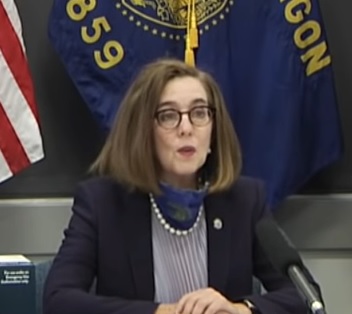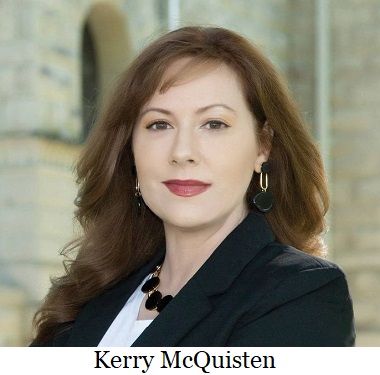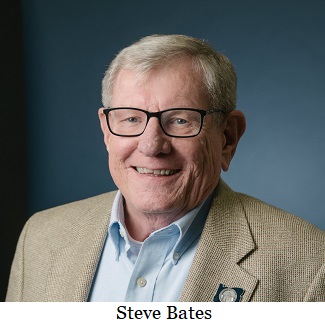 Post an Event
Post an Event
| Benton County Republicans’ Private Fundraising Event, “Bent-on Boots and Bling” with Trey Taylor |
| Friday, September 5, 2025 at 5:00 pm |
| Featuring Trey Taylor
Music Private Event
Friday, September 5, 2025 5:00-5:30 pm VIP Reception
5:30-8:00 pm Heavy Appetizers,
Auction, Concert
Red: $750 VIP Reception
Front Row Table Sponsor
White: $500 Table Sponsor
Blue: $50 per person
Limited Seating. Get Yours Now!!!
Support Local
Dress up: Bling, Cowboy, Patriotic Benton County Republican
FUNDRAISER
www.BentonGOP.org
Get your tickets today at:
https://www.bentongop.org/event-details/benton-county-republicans-fundraiser/form
About Trey:
Trey is the youngest African American Man in Country Music History. The Denver Post wrote
"It's impossible to miss his enthusiasm. With a fondness for cowboy boots, gaudy colors and dazzling jewelry, Trey Taylor could stand toe to toe with any of the Pop, Country or even Rap
contemporaries of his generation.“ |
| Trysting Tree Golf Club, 34028 NE Electric Rd., Corvallis |
Taking a creative approach to recruiting challenges
Gresham, Oregon is in the midst of hiring for seasonal Public Utility Worker positions that support Gresham’s Operations Center.
However, with over
thirty positions to fill and given the state of the current labor market, the City has struggled to get applicants.
In an attempt to overcome these challenges, the City is
taking a creative approach to support recruiting efforts.
Members of Gresham’s Homeless Services Team will be taking copies of applications with them and helping those they encounter to apply for the open seasonal public utility worker positions.
“Gresham’s Homeless Services Team connects people experiencing homelessness with the resources they need including employment,†said Community Services Manager Jessica Harper. “Some of our staff have lived experience with homelessness and for them, getting a reliable, well-paying job was one of the main things that propelled them off the streets and into stable housing. I am excited that these seasonal Public Utility Worker positions may offer that same opportunity to someone experiencing homelessness in Gresham today.â€
A D V E R T I S E M E N T

A D V E R T I S E M E N T
The Gresham Homeless Services Team consists of three specialists who interact with approximately fifteen to twenty people every day.
The team says it is intentional about connecting people with the resources they need whether it be shelter or employment opportunities. They say they are proud of the teams for continuously finding innovative solutions that benefit the entire community.
- Pay for Public Utility Worker positions is $19.27 per hour.
- Positions begin in May and continue for up to six months.
- Public Utility Workers work in Gresham’s Operation Center supporting wastewater, water, parks, storm water, and transportation divisions.
--Bruce Armstrong| Post Date: 2022-04-08 22:12:09 | Last Update: 2022-04-08 22:32:29 |
Sisters area residents who are interested in serving on Planning Commission
Deschutes County is seeking volunteers from the Sisters area who are interested in serving on the County's Planning Commission. Applications will be accepted through Friday, April 29, at 5 p.m.
The Planning Commission reviews land use policy and zoning regulations and makes recommendations to the Deschutes County Board of Commissioners. Members are the official citizen involvement committee on land use planning for the unincorporated area of the County, providing a forum for community input.
There is one vacancy on the Planning Commission for a Sisters area member. The Sisters area member will serve a full term from July 1, 2022 through June 30, 2026.
Planning Commissioners are not paid for their time and serve for four year terms.
The Planning Commission meets at the Deschutes Services Center (1300 NW Wall Street) in Bend, on the second and fourth Thursdays of each month at 5:30 p.m. Additional meetings and locations throughout the County may be required.
Residents who are interested in serving are invited to submit a brief application and letter of interest.
To learn more and apply, see their website.
--Staff Reports| Post Date: 2022-04-08 09:45:44 | |
37 different surveillance technologies but few policies to guide their use
The City of Portland has concluded an
audit of Portland Police intelligence gathering both generally and during the 2020 protests. Chief Chuck Lovell leads the bureau.
According to the report, "A wave of Black Lives Matter protests swept through Portland in the summer and fall of 2020. Police encountered protesters exercising their right to free speech and others vandalizing property and committing arson. The dynamic conditions of the protests presented a challenge for police to enforce laws while safeguarding people’s civil rights.
The audit has two parts. The first reviewed whether police working the protests and criminal intelligence officers gathered and maintained information about protesters in a way that protected their civil rights. The second part focused on how the police used surveillance technology, both during protests and more generally. Among other things, the audit found that the Portland Police Bureau provided no guidance for officers at protests about what information they could collect and that the Criminal Intelligence Unit did not limit access to its reports and kept them past their retention schedule.
The 23 page report recounts that
"The [Portland Police] Bureau had 37 different surveillance technologies but few policies and procedures to guide their use. We found that officers used social media extensively without direction for appropriate use. Our review of video taken from the Bureau’s airplane did not record images that could be used to identify people or vehicles, a finding that may help alleviate protesters’ fears of the Air Support Unit.
Intelligence gathering and surveillance is by its nature secretive, but the Bureau should adopt policies to guide officers tasked with collecting it. The policies should set boundaries for acceptable activity and help ease the public’s fear of the Bureau’s use of intelligence-gathering and surveillance, the collection of which is to make Portland a safer and more secure place to live.
The Oregon Chapter of the American Civil Liberties Union panned the Portland Police in a
statement in which they described the report as "damning." "Such indiscriminate, warrantless surveillance chills free speech, erodes trust between community and government, and creates alarming opportunities for abuse. That is why, under Oregon law, the police are prohibited from collecting and maintaining information on anyone’s political views or activities outside of a criminal investigation. PPB’s broad and highly intrusive surveillance of protesters in 2020 is a blatant violation of this law."
--Staff Reports| Post Date: 2022-04-07 17:33:23 | Last Update: 2022-04-07 20:02:55 |
“Approaching workforce development with an equity lens really is the heart and soul of this legislationâ€
Governor Kate Brown has signed
SB 1545, known as “Future Ready Oregon,†at Intel’s campus in Hillsboro. According to a press release from the Governor's office, "Future Ready Oregon is a comprehensive $200 million investment that will give Oregonians the education, training, and resources they need to secure good-paying careers in key industries across the state. The bipartisan bill is the product of years of work from a coalition of diverse stakeholders working alongside the Governor’s Office and Oregon’s Racial Justice Council."
The legislation is directed at "priority populations" and defines a "priority population" to mean communities of color, women, low-income communities, rural and frontier communities, veterans, persons with disabilities, incarcerated and formerly incarcerated individuals, members of Oregon's nine federally recognized Indian tribes, and individuals who disproportionately experience discrimination in employment on the basis of age.
“Approaching workforce development with an equity lens really is the heart and soul of this legislation,†said Governor Brown. “That means identifying barriers to career advancement for underserved communities, providing support services to help individuals overcome those barriers, and viewing those supports -- such as child care access, or broadband -- as critical infrastructure. Future Ready Oregon will open the doors of opportunity to those who have too often been left behind, including people of color, women, veterans, rural Oregonians, and people with low incomes.â€
Marin Areolla III, President of Advanced Economic Solutions and Co-Chair of the Racial Justice Council’s Workforce Workgroup said, “The Future Ready Oregon model will address the barriers to workforce participation that have kept some Oregonians -particularly BIPOC, rural and other vulnerable workers from accessing the skills and opportunities they need to achieve their full potential and earn livable wages. It will also allow businesses, community based organizations, public agencies, and other partners to collaborate to transform and reinvent Oregon’s workforce system with an equity lens that incorporates culturally and linguistically appropriate practices, respect, trust, transparency, high quality services, effective communication, and innovation at all levels.â€
A D V E R T I S E M E N T

A D V E R T I S E M E N T
Mark Mitsui, President of Portland Community College and a member of the Racial Justice Council’s Workforce Workgroup said, “Future Ready Oregon will connect hard-working Oregonians with living wage careers through career pathways that bridge skills gaps for employers and equity gaps for marginalized communities, in high need sectors. Future Ready Oregon is about making opportunity as universal as the talent around us so that no matter where you were born, no matter what zip code you have, you have the opportunity to earn a better life through education and training.â€
Anne Mersereau, Vice President of HR, Diversity, Equity & Inclusion for Portland General Electric and the Chair of the Oregon Workforce Talent and Development Board said, “The Future Ready Oregon Bill represents an important investment in our future workforce and will create the necessary pathways needed for all Oregonians to have the education, skills and training needed to enter into emerging careers across the state. We believe the transition to the clean energy future must be equitable and inclusive.
SB 1545 will help remove barriers for under-represented communities looking to enter the workforce and provide living wage job opportunities all while building a skilled talent pool to ensure a vibrant Oregon.â€
--Staff Reports| Post Date: 2022-04-07 16:40:40 | |
Oregon discouraging carbon emissions
Last week, Washington State Governor Inslee signed a bill requiring all
vehicles sold in 2030 and after are to be electric.
California Governor
Newscom signed an executive order on September 23, 2020, requiring
new cars and passenger trucks sold by 2035 must be zero-emission
vehicles.
In 2019, Oregon Senator Lee Beyer (D-Springfield) and Representative
Jeff Reardon (D-Happy Valley) sponsored and passed
SB 1044 requiring
that nine out of 10 new car sales be electric by 2035 and half of
registered vehicles.
The goal for electric vehicles was 50,000 in 2020,
250,000 in 2025, 1.1 million in 2030 and 2.5 million by 2035 – basically
100%. Behind schedule, at the end of 2020 there were 32,000
registered zero emission vehicles.
ODOT likes to blame not reaching the
first goal on cheap gas they say causes people to hold onto their
vehicles longer.
ODOT’s
Climate Action Plan, issued in July 2021,
adopted modifications to 120,000 electric vehicles by end of 2027,
missing the 2025 legislative goal.
Most electricity is produced using coal, natural gas, or hydropower.
Cascade Policy Institute reports even with the stringent policies
mandating various levels of carbon-free electricity, those policies can’t
actually be implemented for several reasons.
The most obvious is that
the power sources are unstable and the physics of the grid requires
that electricity supply and demand be in equilibrium at all times
Getting people to purchase electric vehicles may take more trust in the
stability of the supply of electricity.
When
HB 2021 passed in 2021 that moved the target date from 2025 to 2030, it also set goals for electricity
providers to reduce emissions 80% by 2030, 90% by 2035 and 100% by
2040.
There were numerous experts that warned of the likelihood of
rolling blackouts related to supply and stability. HB 2021 even allows
for use of other sources in unstable periods, which means legislators
know the possibility exists.
Hydropower along with natural gas is Oregon’s back-up to supply
stability. Still Oregon refuses to classify hydropower as renewable even
though the U.S. Energy Information Administration considers it a
renewable source.
Oregon is ranked fourth in the nation using
renewable energy with hydropower, and sixteen without hydropower.
Biden’s solution for high gas prices is just buy an electric car. They are
trying to sell electric cars as an answer to pollution.
But there is more to
electric cars than the fuel. Where do you think the materials come from
to make the batteries and what happens to them afterwards?
A single Tesla battery weighs 1,000 pounds and requires extracting and
processing around 500,000 pounds of mineral ore materials to
manufacture. Imagine the huge trenches it will leave behind to meet
the supply demand. The life span may be significant, but the majority
are not rechargeable.
Disposing of a toxic large battery is something you never hear about.
How many restricted landfills and dumps will dot our landscapes? Once
a battery starts to degrade in landfills, they can contaminate the
topsoil, groundwater, and air.
A D V E R T I S E M E N T

A D V E R T I S E M E N T
When the chemical seeping happens, it
can risk entering the human supply chain. Conservationist and environmentalist concerned with fossil fuels need another look at the
bigger picture.
On the drawing table is a 1-million-mile car battery, which will
drastically reduce the amount of waste in a Tesla. Currently, the best
performing Tesla has a single-charge range of around 370 miles and a
lifespan of 300-500,000 miles. Even with Tesla’s recycling program, they
admit there are parts of the battery that is too costly to recycle. And
about 8% cannot be recycled. That’s 80 out of 1,000 pounds that is still
headed to the landfill.
Even if we are all given electric cars, the Treehuggers want to also
measure carbon emissions from all of the consumed energy used in the
processes to produce and construct a building.
It didn’t go unnoticed by
Representative Dan Rayfield (D-Corvallis). He sponsored and the Governor
signed
HB 4139 to establish a pilot program for greenhouse gas
reduction that assesses the greenhouse gas emission from concrete,
asphalt paving mixtures, steel products, and other products identified
by ODOT, and conduct a life cycle assessment and strategies for
reducing emissions.
Oregon Department of Transportation meetings on how to spend
infrastructure funds brought out those advocating for no more
highways. Is that where we are headed with zero-emissions?
--Donna Bleiler| Post Date: 2022-04-07 15:31:00 | Last Update: 2022-04-07 17:03:56 |
Kerry McQuisten is a seventh generation Oregonian
Oregon Republican gubernatorial candidate, Kerry McQuisten, has been given an official endorsement by Chris Barreto, former Oregon Republican Party (ORP) National Committeewoman.
Barreto and her husband, Greg, founded Barreto Manufacturing, Inc. in Keizer Oregon, later relocating the company to LaGrande.
A mother of eight, Barreto was an RNC delegate to the 2016 Republican National Convention from Oregon. She was a delegate for Donald Trump, and served on the Rules Committee of the convention in July 2016 where she successfully helped defend his nomination. She also served on the Credentials Committee at the 2012 RNC Convention.
Barreto says, “I solidly endorse Kerry McQuisten for governor of Oregon. The governor’s office is an executive-level position, and we need Kerry’s management ability in that seat if Oregon is to be represented effectively on a national scale. She’s a real conservative, and I’ve seen her advocate for parents’ rights, including homeschooling, and our Second Amendment rights. She was raised on a cattle ranch with mining and timber; her heart is there. With this endorsement, I’m asking Oregon voters to unite behind her in the primary so that we have the strongest candidate in the general election.â€
A D V E R T I S E M E N T

A D V E R T I S E M E N T
McQuisten received endorsements from the Eastern Oregon Mining Association, Oregonians for Medical Freedom, and Restore Oregon NOW.
McQuisten has also been endorsed by Dr. Kelli Ward, who serves as Chair of the Arizona Republican Party, Union County’s constitutional sheriff Cody Bowen, Utah State Representative Ken Ivory who founded the American Lands Council, and dozens of businesses around the state.
If elected, McQuisten, who is the mayor of Baker City, a seventh generation Oregonian, and a business owner, would become Oregon’s first female Republican governor, and the first governor from eastern Oregon since the 1950s. She would also be Oregon’s first Republican governor in four decades.
--Staff Reports| Post Date: 2022-04-06 18:21:23 | Last Update: 2022-04-06 18:34:13 |
More than 48,000 Oregon households receive over $319 million in rental assistance relief
Oregon Housing and Community Services under the direction of Andrea Bell is continuing to process for payment applications submitted through the Oregon Emergency Rental Assistance Program which stopped accepting applications on March 21. As of April 6, the agency has paid out $319.2 million in emergency rental assistance to 48,371 households.
Applications are being approved for payment or denied based upon the highest need, not on a first-come, first-served basis. Applicants can continue to log on to the OERAP portal to check the status of their application. They will be alerted by email as their application advances.
Five counties and the city of Portland received allocations from the U.S. Department of the Treasury and are running their emergency rental assistance programs. Tenants can contact their local community actions agencies to inquire about additional available rental assistance resources. Renters can also call 2-1-1 or visit oregonrentalassistance.org for additional information.
A D V E R T I S E M E N T

A D V E R T I S E M E N T
Tenants who submit new applications to the local programs can access protections from eviction for nonpayment of rent while their application is being reviewed and processed. Tenants must show proof to their landlord that they applied for the program to receive the protections. Tenants at immediate risk of eviction should apply for rental assistance right away to access safe harbor eviction protections and contact a legal organization.
--Staff Reports| Post Date: 2022-04-06 17:14:49 | |
The impact of gerrymandering can be seen here
Clackamas County boasts ten percent of Oregon’s population. According to the design of our representative democracy, Clackamas County should have ten percent of the thirty Oregon Senate seats, but the people of Clackamas County do not have that distinction. Instead, there are eight Oregon Senate Districts that touch Clackamas County. Most of them are a finger touch with a minimal Clackamas County population.
Only one Oregon Senate District is fully within the boundaries of Clackamas County. That is Senate District 20 which is currently served by Senator Bill Kennemer of Canby.
One other Oregon Senate District has a significant Clackamas County population. That is Senate District 26 which stretches from The Dalles in Wasco County, through and including all of Hood River County, into Multnomah County and the communities of Corbett and Springdale. The Senate District 26 population of these three counties amounts to about 50,000 people.
Senate District 26 also includes the Villages of Mount Hood, the Cities of Sandy, Estacada and Canby, the communities of Boring, Beavercreek, Eagle Creek and Mulino which are all in Clackamas County. The Clackamas County population in Senate District 26 approaches 90,000 people. 65% of the population of Senate District 26 are Clackamas County residents.
Gerrymandering has taken its toll over the years, and now Clackamas County is facing its worst fate. If the Clackamas County voters do not intervene, Clackamas County will not be represented by a Clackamas County Senator in District 26.
A D V E R T I S E M E N T

A D V E R T I S E M E N T
Of the four, there is only one candidate who lives in Clackamas County. The fact is, gerrymandering has kept Clackamas County from receiving its due in Salem. Over the past 30 years, there has never been three Clackamas County residing Senators. It has been over a dozen years since there were two. As a result, all of the communities of Senate District 26 and other areas of Clackamas County
have been under represented. Clackamas County’s voice has been muted on many issues.
2022 can be the first time Clackamas County has two Oregon Senators who live in Clackamas County and care about Clackamas County issues. Oregon Senate Candidate Steve Bates lives in Boring. 70% of the population of Senate District 26 lives within 35 miles of Bates’ Boring home. Bates is the only candidate who is centrally located to serve all of the people of the District.
--Les Poole| Post Date: 2022-04-05 13:19:06 | Last Update: 2022-04-05 15:15:44 |
Billions are available for student homelessness and others
On March 3,
SB 1539 relating to homeless youth in Oregon schools, sponsored by Senator Tim Knopp (R-Bend) died quietly and was laid to rest on a strait party line vote. All nine republicans voted yes and 18 democrats voted no. The vote sent a clear message to Senate Republicans -- inculcating socialist ideology using public schools is the purview of progressive Democrats -- stay out. Some saw this as a rare case of Democrats saving Republicans from themselves.
The summary of
SB 1539, “Establishes a pilot program to provide funding to school districts for purposes of increasing access to schools by homeless students and improving academic achievement of homeless students. Directs Department of Education to award grants to school districts participating in pilot program from Statewide Education initiatives Account.†The bill’s intent was to identify 7 out of 222 public school districts in Oregon with a “significant population†of homeless students, as determined by the
McKinney-Vento Homeless Assistance Act, 42 U.S.C 11434a(2), those districts would receive funding to track, support and enable academic success of homeless students. The funding would come from realignments of Oregon’s corporate sales tax.
SB 1539 had the political tax-and-spend trifecta: children, education and homelessness. According to Senator Knopp, “The state has just not done a good job in supporting homeless youth.†However, had Senate republicans gone to school on student homelessness, they would have uncovered multiple layers and $100s of billions in taxpayer funded programs widely available and targeted directly at homeless students, schools, unaccompanied minors and families.
A D V E R T I S E M E N T

A D V E R T I S E M E N T
No need for pilot programs, federal
subgrants exist to do just what Senator Knopp proposed. Further, The Mckinney-Vento Homeless Assistance Act established program offices in all 50 states and Puerto Rico to manage and ensure every school district throughout the nation has at least one
taxpayer funded McKinney-Vento homeless educational liaison. Depending on a district’s size there could be several. According to the National Center for Homeless Education, a McKinney-Vento homeless liaison’s job includes the following:
- Homeless students are identified and supported to maintain enrollment in their school-of-choice with the same opportunities for attendance and success as any other child. The liaisons use a variety of community and school outreach methods to identify and implement support for homeless students.
- Liaisons ensure children, youth, and families experiencing homelessness receive referrals for taxpayer funded health care, dental, mental health, substance abuse, housing, counseling and other appropriate services.
- Liaisons coordinate taxpayer funded transportation to get homeless children to and from school, if needed, as well as to tutoring sessions and other school activities. Funding can also include car repairs, taxis, local transit, Uber and other modes of transportation required for school related needs.
- Enrollment is immediate -- documentation is not required -- this includes medical and vaccination records, proof of residency, school disciplinary records and transcripts. Additionally, liaisons, school authorities and others cannot contact landlords, leaseholders, host families, housing authorities or anyone else to validate or discuss a student or family’s living situation. In short, there is no means-test to actually prove homeless status under the McKinney-Vento Act. Proving guardianship or status is critically important in cases of child abduction or human trafficking.
- Requirements outlined above also apply to preschool, Early Head Start and Head Start programs. At the other end of the academic spectrum, liaisons assist homeless and unaccompanied students with waivers for college entrance testing, pay for any testing and provide special school district help for college preparation and assistance with financial aid and applications as needed. Parental financial information or signature is not required.
- Pre-paid debit and credit cards, cell phones, wi-fi, computers, supplies, clothes and other elements may be provided as needed to maintain educational attendance and support.
A definition of homeless children and unaccompanied minors is defined by the McKinney-Vento Homeless Act as children from 5 to 24 years old who lack a fixed, regular, and adequate nighttime residence. The Act itself does not objectively define the terms, fixed, regular or adequate; therefore, broad subjective assessments can be created locally as needed.
With billions of dollars at stake, district liaisons, school district administrators and 1000s of federally funded homeless and migrant organizations are incentivized to define student homelessness as broadly as possible. For example, if parents move to a new job and children stay with relatives to finish a school year (or beyond) they could be defined as homeless. A family living in a motorhome while their house is under construction can be considered homeless. Children living in trailer parks, transitional housing or staying with relatives or friends for a variety of reasons can be defined as homeless.
According to the
United States Interagency Council on Homelessness Oregon in 2020, had about 14,000 persons experiencing homelessness in one point-in-time count but the same site lists 24,000 homeless students. Keep in mind, these numbers are separate. For example, best-available data from 2017-18, shows Clackamas County had 287 total homeless persons but 1147 homeless students, Morrow County lists 0 homeless persons but 112 homeless students, Linn County had 180 homeless persons but 1024 homeless students.
If new data ever gets published, expect homeless student numbers to explode. Why? Around 80 percent of homeless children are classified as “doubled-up†meaning, “living with another family or a sponsor.†This category represents 100s of thousands of unaccompanied minors and families entering the country illegally. They are transported by Health and Human Services to sponsors and federally funded private agencies for placement throughout the country. Once enrolled, no questions asked, they enter the system and years of taxpayer financial support begins.
Keep in mind, numbers were before the Biden administration opened the border and data reporting stopped, ostensibly due to Covid. Texas may indicate what’s coming, going from 111,117 designated homeless students in 2016-17 doubling to 221,305 in 2017-18. A 107 percent increase in one year – and this data is 4 years old. Homeless student numbers for Texas alone might be over 500,000 by the end of 2022 with relative increases in every school district around the country. How will taxpayers pay for this?

The 1.9 trillion
American Rescue Plan—Homeless Children and Youth act allocated $800 million specifically for homeless students. Oregon received $7.4 million which was distributed to local public school districts. Additionally, there were three rounds of funding for schools through the Elementary and Secondary School Emergency Relief act
ESSER I,
ESSER II, and
ESSER III each with homeless set-asides. Oregon received approximately $1.63 billion from the three ESSER rounds – money falling from the sky for Oregon school districts.
Simultaneously, there were 3 rounds of Governor’s Emergency Education Relief Funds
GEER I,
GEER II,
GEER III totaling another $60 million for Oregon schools -- fund distribution was based on criteria set by Governors. An additional $30 million dollars was provided to Oregon for Comprehensive Distance Learning with another $28 million dollars in
Educational Assistance to Non-public Schools. Oregon’s migrant student allotment was $27 million just for migrant student education with $7 million more for English teaching. Most Americans and many others also received money from each Covid funding round totaling $3200.00 for every adult and $2500.00 for every child. A family with 4 children, including homeless families, received $16,400.00 in “free†money – enough for a down payment on a house.
Every homeless student, at-risk family, unaccompanied minor, and migrant family is also automatically entitled to
Title I federal benefits. Title I programs provide additional $10 of billions annually for low-income students, minorities, disabled, delinquent, at-risk youth and others. Title I programs automatically enroll recipients into other taxpayer funded programs such as HUD housing assistance, food stamps, USDA school feeding programs, welfare benefits, medical, dental, mental health care and
much more. This money is all totally separate from the additional billions in property tax money Oregon homeowners pay annually to fund public schools.
Evidence is mounting, that using COVID as a pretext, progressive politicians and teacher’s unions -- coordinating with the CDC, Department of Education, Health and Human Services, Department of Homeland Security and other federal agencies likely exacerbated student homelessness and created at-risk families by shutting schools, closing business, forcing parents out of work and opening the southern border. Following destabilization, their solution was a staggering redistribution of wealth, totaling over $5.3 trillion dollars, which moved income from taxpayer pockets to progressive social and welfare programs. Informed conservatives, parent’s rights groups and education analysts suggest this is part of Obama and Biden administration initiatives to, “fundamentally transform America†toward progressive socialist ideology. Children and schools are a primary lever and point-of-entry for this transformative inculcation and to federalize public education.
Oregon senate republicans would be relieved to know, that had they looked, there are billions in taxpayer dollars for Oregon’s homeless students, migrant students and others. No need to readjust Oregon’s corporate sales tax for 7 school districts. Actually, there is enough money available to send every legitimate homeless student in Oregon to the
Exeter Academy, Harvard University’s prep school and the top-rated private boarding school in the nation. Hopefully, future Senate republicans will vote unanimously, not for liberal tax and spend schemes, but to uphold conservative principles, traditional values, free-markets and fiscal responsibility.
--Clarke Vesper | Post Date: 2022-04-05 10:55:06 | Last Update: 2022-04-05 14:46:41 |
Election integrity and voter apathy were discussed
Oregon Republican gubernatorial candidate, Kerry McQuisten, met with Eric Trump on Friday in Keizer, Oregon.
During the meeting, the two discussed election integrity combined with the dynamics of voter apathy in Oregon, and some specifics of McQuisten’s campaign.
“I think people had almost given up on Oregon on a national level,†says McQuisten, “but this election is bringing fresh attention to our state.â€
Solomon Yue, the Oregon Republican Party’s National Committeeman, also had a meeting with Eric Trump regarding the potential of a much-anticipated rally with President Trump in Oregon.
McQuisten notes, “The first thing Eric did was cross the room and give Mr. Yue a hug. This tells me that Oregon hasn’t been forgotten or written off. The past two years have shown us that our red-state governors have been the lions at the gate together, pushing back against this federal march into socialism. I look forward to joining them.â€
A D V E R T I S E M E N T

A D V E R T I S E M E N T
Though the meeting had been arranged well in advance, McQuisten kept it off her campaign calendar for security reasons, with Eric Trump’s attendance at the Reawaken Tour also kept under wraps for the same purpose. He later went on stage as the keynote speaker for that event.
“Eric told the crowd that though he and his family didn’t need the abuse, they would never stop fighting. He expressed love for our country. He stressed the need for sincere, solid elected officials,†McQuisten said. “I’ve seen for myself that we aren’t in a Democrat versus Republican fight. This is good versus evil, and a fight to save America one state at a time.â€
Last month, McQuisten was enthusiastically endorsed by President Trump’s first lady of election integrity, Dr. Kelli Ward, who serves as Chair of the Arizona Republican Party.
If elected, McQuisten, who is the mayor of Baker City, a seventh generation Oregonian, and a business owner, would become Oregon’s first female Republican governor, and the first governor from eastern Oregon since the 1950s. She would also be Oregon’s first Republican governor in four decades.
--Staff Reports| Post Date: 2022-04-04 11:26:20 | Last Update: 2022-04-04 13:01:39 |
Brown retaliated by imposing regulations on state agencies
The battle over climate regulations continues. The latest skirmish is a petition which has been filed by
Oregon Business and Industry -- a statewide business lobbying organization that describes itself as "the largest and most effective statewide business advocacy group in Oregon" -- with the Oregon Court of Appeals to request judicial review of environmental rules crafted at the Department of Environmental Quality.
The
petition for review of Greenhouse Gas Emissions Program 2021 Rulemaking is a response to Governor Kate Brown's
executive order requiring state agencies to adhere to strict climate regulations. This order, in turn, was given as a response to a Republican walk out during the 2020 Session over
SB 1530, which was sweeping climate legislation.
The rules were adopted during a
special meeting of the Environmental Quality Commission, the Governor's appointed board that oversees the Oregon Department of Environmental Quality
According to the petition, "The CPP Rules aim to reduce statewide greenhouse gas (“GHGâ€) emissions by 90 percent by 2050. To achieve that sweeping objective, the CPP Rules primarily target suppliers of natural gas, gasoline, diesel and other covered liquid and gas fuels. Among other things, the CPP Rules set, and make fuel suppliers responsible for meeting, a total statewide limit (which declines annually) on GHG emissions. In other words, the CPP Rules hold fuel suppliers directly accountable for the GHG emissions from covered fuels used by all Oregonians. The CPP Rules were designed to limit the availability of covered fuels and thereby make it too expensive to combust those same fuels in Oregon, or in certain cases, to prohibit manufacturing facilities from using specific fuels. But because business and consumer use of these fuels is central to Oregon’s economy, the CPP Rules will have a profound and unprecedented impact on everyday life in Oregon. "
When the legislature failed to pass the legislation because of the Republican walk out, Governor Brown retaliated by imposing regulations on state agencies.
--Staff Reports| Post Date: 2022-04-03 14:04:07 | Last Update: 2022-04-03 16:12:34 |
Says no to closing 176,000 acres
From the plush office in Portland, environmental nonprofits Oregon
Natural Desert Association (ONDA), the Audubon Society of Portland, and
Defenders of Wildlife, are trying to dictate land management in Eastern
Oregon.
It’s no wonder residents of eight Eastern Oregon counties have
voted to join the “Greater Idaho†movement. Their goal is to break lose
of this Metro run state, and be recognized that their livelihood is
needed to sustain Metro.
ONDA attorney, Mac Lacy, has made his career with his eyes on
eastern Oregon’s public lands, wilderness and imperiled species.
Recently his aim is protecting Oregon’s vast sagebrush landscape for
the sage grouse.
Representing ONDA, Lacy’s latest effort is to chase ranchers from
rangeland by filing a temporary restraining order and preliminary
injunction against grazing on 13 Oregon pastures.
The case is against
BLM and Cahill Ranches to accelerate a 2015 Oregon Greater Sage-
Grose Record of Decision/Approved Resource Management Plan
Amendment (ARPMA), a conservation plan for Research Natural Areas
(RNAs) that prohibits grazing in 13 pastures to allow for research on the
sage grouse.
That plan identified 15 pastures to be closed to grazing for
research with a two-year notice. Two have been vacated, and it calls for
39 miles of fencing. ARPMA was developed during the Obama
administration then dropped from a revised version enacted by the
Trump administration. However, a federal court reinstated it in 2019,
which the environmental groups are pursuing.
U.S. District Judge Michael Simon released an
opinion and order on March
29 saying the environmental plaintiffs haven’t shown that turning cattle
out on the pastures will cause irreparable harm to sage grouse or to
rangeland research.
ONDA and Attorney Lacy didn’t stop at the 13
pastures in the conservation plan.
Judge Simon’s opinion states,
“Moreover, closure of the four pastures containing RNAs set for grazing
in April would enjoin grazing on significant portions of land not
designated as an RNA by the 2015 ARMPA. Because fencing has not yet
been installed, Plaintiffs propose that the Court order Defendants to
close the entire pastures that contain the key RNAs. The total acreage
of the key RNAs 21,779 acres. The total acreage of the pastures
containing the RNAs is 197,867 acres. Thus, Plaintiffs ask the Court to
close 176,088 acres of pasture not designated as key RNAs under the
2015 ARMPA.â€
Ranchers are asking, what is more detrimental to the sage grouse, co-
habitat with cattle or fences?
The BLM attorney argued that it must
follow bureaucratic processes before halting grazing and building the
necessary fences to keep cattle out. Fences aren’t an environmentally
friendly way to close pastures and it impacts wildlife and plant species
so BLM is studying alternative methods. BLM has not identified any
data that would be lost or not collected if the closures don’t happen on
schedule. So why is ONDA so impatient?
US Agricultural Research Service rangeland scientists David Ganskopp
(now retired) and Chad Boyd studied cattle grazing patterns on
sagebrush communities. They found that cattle first preferred to graze
on perennial grass growing between sagebrush plants where the sage-
grouse nest and feed. They concluded that ranchers could preserve
grouse habitat by monitoring grass available.
A D V E R T I S E M E N T

A D V E R T I S E M E N T
The livestock industry is the best suited for eastern Oregon’s rough land
and weather conditions. It’s where most of Oregon’s cattle are raised
with and estimated production value of $493 million, ranked as
Oregon’s second highest agricultural commodity. Ranchers have united
to form Oregon Country Beef cooperative to emphasize stewardship of
the land that enables them to brand their beef as a specialized
“natural†commodity. Limiting pasture land will have consequences.
Why did Lacy and ONDA file the injunction when they knew they were
exceeding the ARMPA?
This is a tactic in search of a liberal judge, and
they weren’t counting on Judge Simon calling them out. Inflation could
be worse if our food supply is threatened. Judicial races do make a
difference.
--Donna Bleiler| Post Date: 2022-04-03 10:15:55 | Last Update: 2022-04-03 14:52:18 |
Read More Articles






















 The 1.9 trillion American Rescue Plan—Homeless Children and Youth act allocated $800 million specifically for homeless students. Oregon received $7.4 million which was distributed to local public school districts. Additionally, there were three rounds of funding for schools through the Elementary and Secondary School Emergency Relief act ESSER I, ESSER II, and ESSER III each with homeless set-asides. Oregon received approximately $1.63 billion from the three ESSER rounds – money falling from the sky for Oregon school districts.
The 1.9 trillion American Rescue Plan—Homeless Children and Youth act allocated $800 million specifically for homeless students. Oregon received $7.4 million which was distributed to local public school districts. Additionally, there were three rounds of funding for schools through the Elementary and Secondary School Emergency Relief act ESSER I, ESSER II, and ESSER III each with homeless set-asides. Oregon received approximately $1.63 billion from the three ESSER rounds – money falling from the sky for Oregon school districts.




